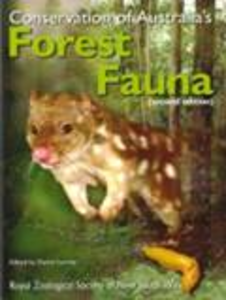Linear infrastructure in the tropical rainforests of far north Queensland: mitigating impacts on fauna of roads and powerline clearings
Goosem, Miriam (2004) Linear infrastructure in the tropical rainforests of far north Queensland: mitigating impacts on fauna of roads and powerline clearings. In: Lunney, Daniel, (ed.) Conservation of Australia's Forest Fauna. Royal Zoological Society of New South Wales, Mosman, NSW, Australia, pp. 418-434.
|
PDF (Published Version)
- Published Version
Restricted to Repository staff only |
||
![[img]](https://researchonline.jcu.edu.au/898/2.hassmallThumbnailVersion/898_Goosem_2004_front_cover.jpg)
|
Image (JPEG) (Front Cover)
- Cover Image
Download (5kB) |
Abstract
The impacts on rainforest fauna of internal fragmentation caused by clearings for linear infrastructure such as roads, highways and powerlines have been examined in the tropical rainforests of the Wet Tropics in far north Queensland. The impacts include habitat loss through clearing and edge effects, road mortality, disturbance from traffic movement, noise, headlights and pollutants and invasion along the clearings by weeds and fauna alien to the rainforest (including feral species). Barrier effects result from a combination of these factors. Rainforest fauna is often highly susceptible to these impacts due to specialised habitat requirements. Data collected over the past 15 years relating to vertebrate road mortality and trapping and tracking of small mammals, possums, herpetofauna and invertebrates confirm that many rainforest species suffer edge, linear barrier and disturbance impacts. Measures to mitigate these impacts on fauna have been or are currently being trialed and have proved successful for many species of wildlife. Mitigation may be achieved by maintenance of canopy connectivity or restoration of rainforest connectivity via corridors, faunal underpasses under roads and overpasses above them in the form of rope bridges. Preferable mitigatory strategies depend on circumstances and species. Where highways carry large numbers of fast-moving vehicles, funnelling animals under many high bridges with fencing to keep them away from the road will allow wildlife to move in the landscape while reducing road mortality.Alternatively, where roads carry few vehicles, keeping canopy above the road is a cost-effective means of maintaining connectivity for wildlife and aesthetics for tourists without a high road toll, while also reducing road erosion, edge effects, and weed and feral animal invasions.



